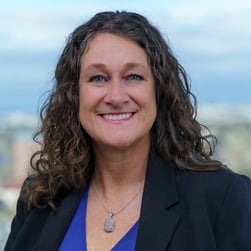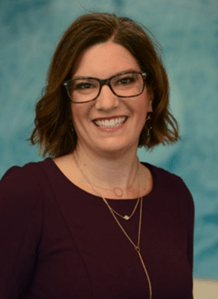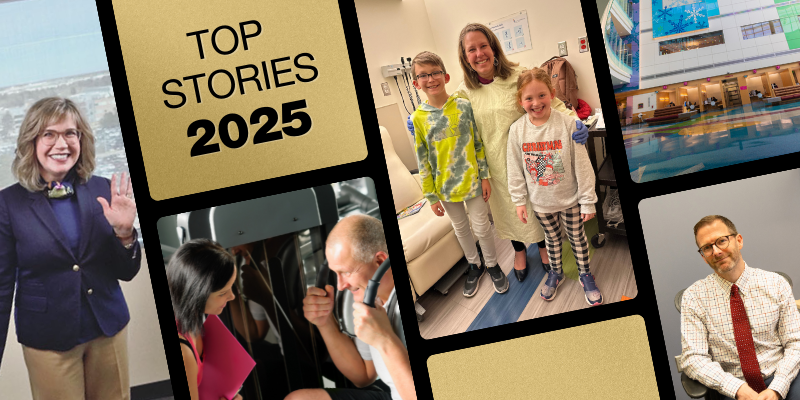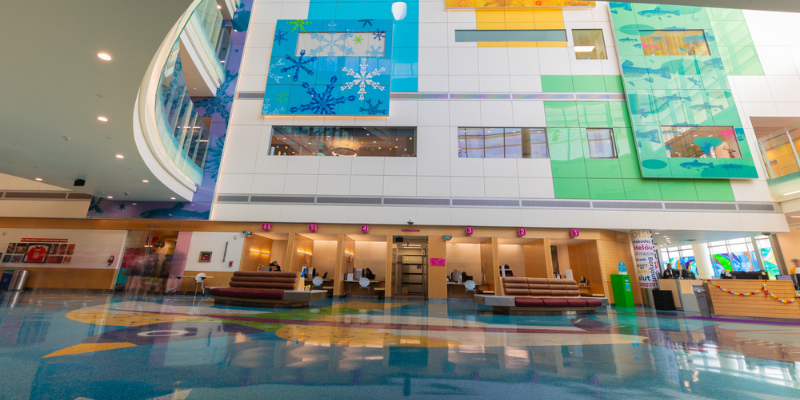In March of 2020, the pandemic drove Coloradans to enter lockdown mode. This was no different for researchers on the CU Anschutz Medical Campus. The result was that research operations were completely shuttered unless they were related to COVID-19 or essential to patient care.
A group of researchers from across the country wanted to learn how different institutions handled closing research down and eventually opening it up. Every institution involved was receiving Clinical and Translational Science Awards (CTSA) – in other words funding – from the National Center for Advancing Translational Sciences/NIH. CTSA dollars provide infrastructure and resources for clinical and translational research at many institutions—including CU Anschutz where the grant funds the Colorado Clinical and Translational Sciences Institute (CCTSI).
 |
| Janine Higgins, PhD |
Janine Higgins, PhD, professor, pediatrics-endocrinology and her colleague Jennifer Armstrong, MD, MPH, associate professor, pediatrics-neurology helped lead the research. They were tasked with learning about conducting research in a pandemic.
A survey was developed and sent to all 62 CTSA hubs across the country regarding the impact of the pandemic and the processes they used to protect research personnel and participants with respect to the conduct of research that was unrelated to COVID-19.
The results of the survey showed incredible similarities in the COVID responses between major academic medical centers, even though all processes were developed independently. Their report was recently published in a special edition of the Journal of Clinical and Translational Science.
“Even though we are all different institutions within the CTSA program, everyone did basically the same things across the country to both pull back and reactivate research,” Armstrong says. “We developed our process independently and it mirrored what most others did across the country.” Armstrong is also the chair for the Colorado Multiple Institutional Review Board (COMIRB) for both CU Denver and CU Anschutz.
“I believe that shows that, when you focus on participant and staff safety and the risk/benefit of every research study, the emergency response priorities become clear,” says Higgins who is also the director of operations for the CCTSI.
 |
| Jennifer Armstrong, MD, MPH |
Commonalities
Examples of what many institutions did include shifting to remote work and research, using electronic consent forms and clinicians conducting visits through telehealth.
“When you take a step back and look at data from around the country, an extreme amount of priority was put on staff safety,” Armstrong says. “When we talk about research ethics: beneficence, justice, respect of persons, we have to consider our study team and give the same respect to the people conducting research as our participants.”
The CU Anschutz response
Higgins noted two key things that separated the response of CU Anschutz from other academic medical centers: 1) The decision to allow each research location to stage reopening for additional priority groups based on their own capacity and needs, and 2) the use of a single Clinical Research Reactivation Portal to apply for study activation.
She says the decision to allow each research location to reintroduce research groups at their own pace reduced anxiety among investigators.
“I am so proud of everyone on campus that did the grueling work of protocol review and reactivation,” Higgins says. “For the Clinical Translational Research Centers, almost all of our 837 applications for study reactivation were completed within just 24 hours!”
Armstrong noted one positive outcome was that basic science and clinical research came closer together: “We had to talk to each other! We so often work in silos, especially in research. Now we had folks coming together from places like the Barbara Davis Center, Hemophilia and Thrombosis Center, Anschutz Health and Wellness Center, the Brain Imaging Center, all learning what research is going on and how we can make research continue for everyone.”
She also emphasized that important trials that needed to be sustained, which were not COVID related but crucially important to someone’s health care, continued. “We worked with regulatory teams, institutional leaders, IRBs, to make sure all safety regulations were there for everyone, and we didn’t halt care that needed to be done,” Armstrong says, “There was a real sense of camaraderie and flexibility.”


-1.png)
